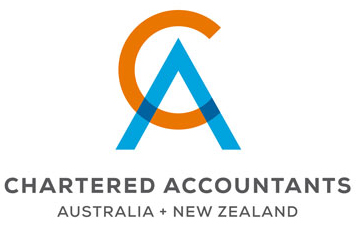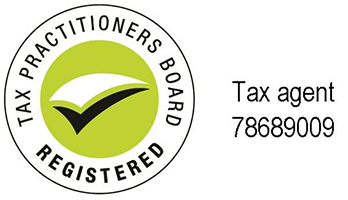Consultation on Division 7A reform begins
Treasury has released a consultation paper entitled Targeted amendments to the Division 7A integrity rules, outlining the Government’s proposed reforms to Division 7A.
Division 7A is a tax integrity measure designed to ensure that certain taxpayers (i.e., shareholders of private companies and their associates) cannot directly access funds taxed at the applicable company tax rate.
Specifically, where a company makes a payment or otherwise lends to or provides assets for the private use of shareholders and/ or their associates, Division 7A will generally treat such amounts as unfranked dividends, which are taxable in the hands of the recipient.
These include (amongst other things):
- simplified Division 7A loan rules; and
- legislative clarification that unpaid present entitlements (‘UPEs’) come within the scope of Division 7A.
The proposed amendments are intended to apply from 1 July 2019. Arguably, if enacted, these changes will be the most significant tax reforms to impact business and investment clients over the next two years.
In particular, the proposed reforms relating to the new ‘simplified’ Division 7A loan rules will require both taxpayers and the practitioners who advise them to adjust their traditional approach to such loan arrangements and internal cash flow funding.
New 10-year Division 7A loans
Currently, the rules allow Division 7A amounts to be converted into one of two types of loans, being either:
- a seven-year loan; or
- a 25-year loan where the loan is appropriately secured.
Following the implementation of the proposed amendments as outlined in the consultation paper, a new single loan model will apply, with the following features:
- A maximum term of 10 years.
- The annual benchmark interest rate will be the Small business; Variable; Other; Overdraft Indicator Lending rate (which is generally higher than the current Division 7A rate).
- No formal written loan agreement will be required, although written or electronic evidence showing that the loan was entered into must exist by the lodgement day of the private company’s income tax return.
- The minimum yearly repayment amount will still consist of both principal and interest, however:
- The principal component would be a series of equal annual payments over the term of the loan (e.g., Principal repayments of $10,000 would be required in each year for a $100,000 loan);
- The interest component would be calculated on the opening balance of the loan each year; and
- Interest would be calculated for the full income year, regardless of when the repayment was made during the year (except for Year 1, when interest is always proposed to be calculated based upon the loan outstanding at lodgement day).
Transitional rules for existing Division 7A loans
Transitional rules are also proposed to allow taxpayers that have existing seven or 25-year loans to transition to the new 10-year loan model, as follows:
- Seven-year loans – All complying seven year loans in existence as at 30 June 2019 will be required to comply with the new proposed loan model and the new benchmark interest rate (with their existing outstanding term).
- 25-year loans – All complying 25-year loans in existence as at 30 June 2019 will be exempt from the majority of changes until 30 June 2021, except the interest rate payable for these 25-year loans during this proposed transitional period must equal or exceed the new benchmark interest rate.
On 30 June 2021, it is proposed the outstanding value of any 25-year loans will give rise to a deemed dividend unless a complying 10-year loan agreement is put in place prior to the lodgement day of the relevant 2021 company tax return.
Other significant Div. 7A reforms
Other significant reforms include:
- Special transitional rules to apply to traditionally quarantined pre-1997 loans that have not already been forgiven and have been reported on the tax return;
- The removable of the concept of distributable surplus; and
- An extension of the period of review to account for a deemed dividend to a proposed 14 years!
Division 7A and UPEs
A UPE is created where a trust makes a private company presently entitled to a share of its income for a year, but does not pay that entitlement out in full.
Since 16 December 2009, the Commissioner has taken the view that UPEs owing to companies are generally within the scope of Division 7A, unless the funds representing the UPE are held for the sole benefit of the private company. Refer to TR 2010/3.
Under the current treatment, this means that UPEs owing to company beneficiaries (e.g., ‘bucket’ companies) either need to be:
- paid to the relevant beneficiary;
- put on complying Division 7A terms; or n held under a ‘sub-trust arrangement’, such that the funds are held for the sole benefit of the private company (e.g., on seven or 10-year interest-only terms as outlined in PS LA 2010/4).
Following the introduction of the proposed amendments, a UPE will be a deemed dividend from the relevant corporate beneficiary to the trust unless:
- the UPE is paid by the trust to the private company in full; or
- the UPE is put on ‘complying loan terms’ (under which principal and interest payments will be required to be made over a maximum period of 10 years);
by the lodgement day of the company’s income tax return for the relevant income year.
The intention of this change is for UPEs to be treated consistently with other payments made by private companies.
Transitional rules for existing UPEs
The application of the proposed Division 7A treatment of UPEs will depend on when the UPE first arose, as follows:
- UPEs arising on or after 16 December 2009 and on or before 30 June 2019, that have not already been put on complying Division 7A loan terms or deemed to be a dividend, will need to be put on complying terms by 30 June 2020.
Any amounts outstanding will result in a deemed dividend.
- All corporate beneficiary UPEs that arise on or after 1 July 2019 will need to be either:
– paid to the private company; or
– put on complying loan terms under the new 10-year loan model prior to the private company’s lodgement day.
Otherwise, they will be deemed to be a dividend in the year the UPE arose.
Ref: Treasury consultation paper: Targeted amendments to the Division 7A integrity rules

